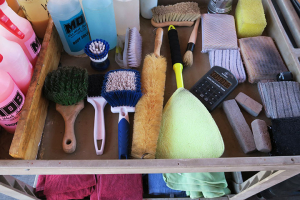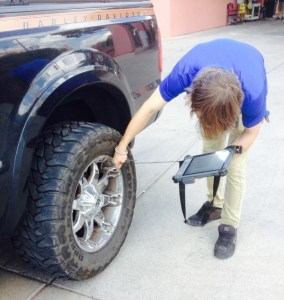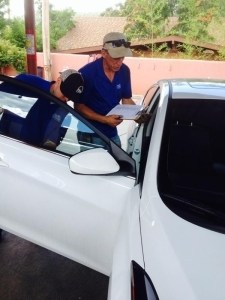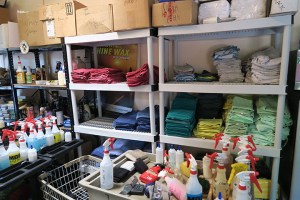Cleaner Quicker Quality
Our goal is to make your car look and feel new again. Sedona residents demand high quality, higher than in some other cities. The reasons are obvious from Sedona’s unique demographics.
- It has a significantly higher education level than the rest of Arizona- almost 50% greater incidence of Bachelors degrees and almost double the incidence of Graduate degrees. With education comes discrimination and Sedona residents are discriminating.
- Household incomes and home values are also well above the Arizona averages
- Real estate and service businesses comprise 27% of employment versus 18% in Arizona. These professionals need clean vehicles.
- Median age of the population is almost 55, with 42% over 55. These folks have the experience to know the difference and become particular in what they like.
- Women make up 53% of Sedona’s population, and 47% of them are over 55. Many don’t feel like cleaning out their own vehicles any more, and most people would agree that women have a better eye for details than most men.
- And there is a higher proportion of expensive cars in Sedona than elsewhere in Arizona. Their owners want to enjoy and protect their investment.
All of which says Sedona has extremely high quality standards for everything, including detailing their vehicles. So we have an exceedingly tough hurdle to meet. We do our best to meet it every day with every customer and every vehicle we detail.
The “Devil is in the Details”
So here are a few ways we go about meeting Sedona’s high quality standards.
Exterior Washes
Even state-of-the-art technology can’t do everything. Sometimes a little good old fashioned elbow grease is needed for the best possible results. The best tunnel brushes and sprays have difficulty effectively reaching some areas like recessed lights and license plates, running boards, chrome tailpipes, under windshield wipers, under rear spoilers on SUV’s, and into wheels. Arizona’s hot sun and dry air also bake on substances like bugs and bird scat onto the finish, making especially tough to remove. Therefore in our Platinum wash or a-la-carte we offer a hand prep to thoroughly get at tough areas and substances like those before going through the tunnel. We use special boars hair brushes which won’t leave small scratches like synthetic brushes to be consistent with our scratch-free policy. We use special bug sponges where necessary which also won’t leave scratches or smears. While we have powerful blowers to dry vehicles, we also touch up any residual water with hand towels on exit to ensure the best possible quality wash as well as allow us to do a final inspection of results. The result is an exterior wash of hand wash quality- with prep, tunnel wash, and towel touch up in 5 minutes
Dedicated Detail Bays allow for detailing quality and efficiency.
The “devil is in the details” in the detailing business too. Therefore we treat cleaning your vehicle as a serious business. We want all our detail work, whether express or luxury details, to be high quality and consistently high quality. That is a challenge because, just as for a car repair body shop, every situation is different. Vehicles come in all shapes, sizes and an enormous range of conditions and cleaning challenges. The key to getting excellent quality details is to say alert to the little things and tailor our work to the specific needs of each vehicle just as it is the day it is brought in.
That takes steady focus and concentration. Therefore we don’t vacuum in the check-in line where it holds up other customers and makes it hard to do a thorough job. Neither is acceptable to us. We don’t do the other express detailing work, like interior windows and interior wipe downs and cleaning, on the exit ramp because it creates congestion and blocks other vehicles exiting, again working against a high quality job. Instead, we use dedicated parking spots, or bays, in front just past the greeting area for express details and in the rear for luxury details. This allows us to concentrate on the specific work to be done without extraneous distractions. Backing in vehicles side-by-side in the front also allows for better supervision and faster loading in the tunnel when the interiors are done.

The bays also help efficiency by keeping commonly used equipment within easy reach at all times. Each bay has a cart with all the basic equipment and supplies that might be needed. It also has its own vacuum stand with two 25 foot vacuum hoses so a vehicle can be vacuumed by two people when needed. Each worker has his or her own kit of key tools on that cart and is responsible for maintaining their kit at the end of every day so it is always complete. That isn’t as simple as it sounds. They have over a dozen different types of brushes, sponges, and other tools such as pumice stones to use for specific types of cleaning challenges. Each cart has 8 different kinds of cleaning and conditioning liquids for different purposes. Each cart has all types of towels for different uses, and two laundry containers.
Other more specialized equipment is also within easy reach, such as our carpet extractor, five different types of buffers, compressed air, specialty waxes and other supplies, and spare supplies for their kit and cart.
Color Coding and Windshield Marking Helps Efficiency and Quality.
Colored card stock on the windshield also helps both quality and time. Yellow is for express only and indicates the arrival time and code for the services to be done so supervisors can quickly see how long a car has been their and judge its status based on the work required. Pink indicates there is subsequent work to do in the luxury detail bay, like hand wax, so the catcher at the tunnel exit instantly knows to drive it to the bay, not the exit ramp. A blue sheet indicates there are floor mats involved so all personnel handling the vehicle know to be sure to match them up before returning the vehicle to the customer.
We’ve improved this process further by using colored erasable ball markers to mark windshields in large letter as to the time in, wash, detail, and any other pertinent information so they is highly visible and readable at a distance. This not only helps the detailers keep track of services needed and time, but also the supervisors in ensuring vehicles are begun first in- first out when we’re busy and keeping track of times and allocating resources as needed. Lastly, it helps the greeter to get an idea of how long vehicles have been in the bays to better advise incoming customers on wait times. Then, as the vehicle enters the tunnel, the loader cleans off the windshield with a prep brush.
Towels, Towels, Towels
Fussing about towels may sound pedestrian. Yet towels and the careful way we manage them is key to our getting quality.
We have five different color towels each for a different purpose.
White is for wheels, tires, or other under body components. The hard dirt and grit from those areas can easily scratch the outside finish or interior of your vehicle. We even wash those towels in their own washing machine to ensure that no grit or dirt gets into the towels used for other purposes.
Red is for interior work, blue is for exterior. That is to ensure that a chemical designed for one area is not accidentally transferred to another area where it might do damage. Red and blue towels are washed together in our large washer whose high spin rate ensures they come out just moist and perfect for use in those applications.
Yellow and green are for glass, windows and dashboard instruments. Windows are the toughest challenge we have because it is extremely difficult to leave them streak and smear free. Too little or too much solution, the right type of cleaning stroke and pattern, the right towel material for the right challenge, the correct cleaning solution to handle anything from tough cigarette smoke residue to smears from the family dog pressing their nose against the window, all make a difference. Any contamination with other chemicals designed for other purposes can make the towel useless for glass. Therefore we never even wash them in the same load as the red and blue towels to be sure there can be no accidental transfer of a deleterious chemical agent to them.
To make things even tougher, the quality microfiber towels needed for windows have extremely fine filaments that will clump in relatively low heat, causing streaking. So we keep them below 105 degrees to ensure that won’t happen, washing them cold. Other towels are spun at a high rate that takes them to a moisture content that is ideal for cleaning, but window towels need be less moist to start, so we tumble dry them to protect them from excessive heat.
It doesn’t stop there. How we use them is equally important. We only use a towel one time on one vehicle before washing it again to ensure we don’t transfer dirt from one vehicle to another. We never let them lie on the ground where they can pick up dirt, We keep window towels, interior and exterior towels, and wheel/tire towels separate from each other before and after use.
Who would think there is so much involved in proper handling of towels, and that doesn’t even get into the subtleties of things like door jams, which are inside the car and need be handled with interior cleaning, yet are coated with abrasive grit and dirt from the outside roadway, and so require special treatment to avoid contaminating or scratching other areas of the car.
Therefore TOWELS deserve to be used and cared for carefully due to their importance to quality results, and we take them seriously.
Rigorous Standards and Training
We highlighted the tougher than average quality expectations of Sedona residents. Therefore “Express Detailing” is a meaningful term. “Detailing” means it is a detail, higher quality than the typical light pass of most “full service” car washes. “Express” means we do more tasks in less time than most real details would take, so people are able to take advantage of our services without scheduling them in most cases as with many detailing operations. That requires us to be far “Quicker” that comparable details by other washes, and “Cleaner” than typical full service operations. This is without doubt our largest challenge and Quality is discussed in detail below and more on time in the section “Your time is important to us.” Learn more
Defining Specific Tasks and Setting Standards
The only way to get high quality details in the shortest possible time is to treat it like a manufacturing operation. Quality and efficiency come from doing something the best way, in the best order, and the same way every time. That requires training and, most of all, experience. It all starts with well-defined techniques and time standards for each.
Therefore we have dissected each of our services into their basic categories (eg vacuuming, cleaning windows, cleaning interiors) and then into the detailed tasks to be done for each and how to do them (vacuuming under the driver’s floor mat or between the seat and console, cleaning cup holders or cleaning door pockets and door handle recesses). We carefully defined standard techniques for doing each task the right way, and standards for times for how long (in seconds) it should take to do it that way in an average situation. These various categories and the tasks within them also need be done in the right order to be most efficient and also to avoid messing up work already done. A target time was developed for each task, initially based on estimates, and then based on doing the tasks repeatedly in training. Naturally the time can vary widely based on the condition of the vehicle. However, it doesn’t stop there. We divide the vehicle into quadrants- drivers, passengers, rear passenger side, rear driver side, and define the order in which they are done (clockwise) and which tasks need be done for each, some of which are different for efficiency reasons. For example, as well as the obvious ones in each quadrant, the windshield, console and front cup holders are done from the passenger seat, but the instrument panel is done from the driver’s seat, and the rear window is done from the rear passenger seat.
At the time of writing the result of this process is 32 separate tasks defined for our Silver Express Detail on a sedan (for example, one task is cleaning the inside of the windshield) , 94 for our Gold, and 134 for our Platinum. Larger vehicles like SUV’s have still more. The number of tasks in each have actually increased since we opened as customers have requested additional items be included or we have further segmented task areas for quality control. For example, the Silver initially had 22 items, now 32. Another example of the high quality standards of Sedona residents.
This is documented in detail for the various services for a both a typical sedan and medium SUV for training and reference. A visible brief summary of the tasks for each express detail package and the target times for the package are posted on vacuum stands or work carts.
“Live Ammunition” Training
In training we typically spread fine-ground cereal, dust from our vacuums, dirt, and food stains inside, and smear the windows with a hand that has just rubbed on hand cream. Admittedly, actual experience poses a wider variety of challenges and the degree to which dirt and stains are deep or bonded with surfaces.
Our training emphasizes repetition and competition on a specific express detail package or major areas of a package. Each person does a series of vehicles in rapid succession and each one is timed and inspected for quality. If quality is inadequate they are disqualified. If quality is satisfactory, then the times are compared to rank everyone.
It is rare that we can get the entire staff together for training, so we do it in smaller groups, typically after closing or on Sunday, when we have limited service on major details and express wash only.
When new people are hired, we go through the written material with them and then team them with a supervisor as a mentor, who gives them one on one coaching while doing actual details. New employees start on Silvers and when they become proficient, they move to Gold, and ultimately to Platinum.
Inspections
We conduct inspections at multiple points during the process:
Greeter station
The first and most important quality control is at the greeter’s station.
 The greeter inspects each vehicle in an attempt to ensure that the wash selected is appropriate to deal with the cleaning challenges and the condition of the vehicle’s finish. The greeter inspects the types of material on the vehicle to evaluate what it takes to remove it. The greeter also inspects the areas of the vehicle that any wash tunnel’s brushes may have difficulty reaching to do the best job cleaning and determine if they require special care. Based on the evaluation, the greeter recommends the appropriate wash and express detail..
The greeter inspects each vehicle in an attempt to ensure that the wash selected is appropriate to deal with the cleaning challenges and the condition of the vehicle’s finish. The greeter inspects the types of material on the vehicle to evaluate what it takes to remove it. The greeter also inspects the areas of the vehicle that any wash tunnel’s brushes may have difficulty reaching to do the best job cleaning and determine if they require special care. Based on the evaluation, the greeter recommends the appropriate wash and express detail..
After the detailing service – Quality Assurance Checklist
The detailer assigned to the detail is responsible to fill out a quality control check list that itemizes the major areas they have cleaned and initial each item as completed. This form also reminds the customer to check seat and mirror adjustments. Seats may have been moved for the worker to be able to drive the vehicle safely, and mirrors may be moved when cleaning or drying.
 After the detail service Supervisor must inspect vehicle before being loaded into tunnel. Just like a book writer needs a proof-reader, we always want a fresh pair of eyes inspecting the vehicle. The procedure is for a manager or supervisor to do the inspection before it is returned to the customer, but if none are available it is done by another worker not involved with that vehicle. The inspector adds their initials to each item as having been accomplished.
After the detail service Supervisor must inspect vehicle before being loaded into tunnel. Just like a book writer needs a proof-reader, we always want a fresh pair of eyes inspecting the vehicle. The procedure is for a manager or supervisor to do the inspection before it is returned to the customer, but if none are available it is done by another worker not involved with that vehicle. The inspector adds their initials to each item as having been accomplished.
Exit from tunnel
Each car is inspected after it exits from the tunnel to see if any areas are still dirty. If so, it is corrected immediately, as is true of all the other inspections as well.
With the customer
This is the inspection that counts the most. The worker parks the vehicle in the delivery area and brings the customer out to the car where they are shown the Quality Control Checklist for their vehicle and it is reviewed with them while inspecting the areas of the car together. If we missed something or sometimes if a customer has a particular preference in how they like something, we will take corrective action then and there.
Perfection?
We wish we could say that we and the process are perfect, but sometimes something may be missed. We ask our customers to immediately point any discrepancies out to us, both so we can fix it, and also to help us identify ways to get better every day at what we do. We consider that they are doing us a favor, and their feedback is an essential part of enhancing our procedures and training as well as a myriad of other areas where we have implemented valuable and creative ideas from our customers.
Your time is also important to us.
Learn more about how we work to minimize customer waiting times while ensuring quality. Learn more


